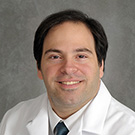It’s estimated that when a large blood vessel supplying the brain is blocked, more than one million brain cells are irreversibly lost each minute that passes. This makes stroke one of the most time-sensitive diagnoses in medicine.
Recognizing the early signs of stroke is crucial to help minimize brain damage and improve chances of recovery.
What’s Happening During a Stroke?
During a stroke, the blood supply to part of the brain is disrupted, either by a clot blocking an artery (ischemic stroke) or by bleeding into the brain (hemorrhagic stroke).
This interruption deprives brain cells of oxygen and nutrients, leading to their rapid damage or death. The affected area of the brain controls specific functions, and the severity of symptoms depends on which part is impacted.
Common Early Warning Signs of Stroke
It’s crucial to pay close attention to your body and act promptly if something feels off; recognizing early warning signs can be the key to saving lives during a stroke.
Some common early warning signs of stroke include:
- Sudden Face Drooping: One side of the face may droop or feel numb. A good indicator of face drooping is when we’re smiling, so check the mouth for asymmetry.
- Weakness or Numbness: Sudden weakness or numbness in the arms, legs and/or face, especially on one side of the body. If both arms are raised, one may start to lower or drift downward, for example.
- Difficulty Speaking: Slurred or nonsensical speech, or difficulty speaking, with trouble articulating words or phrases.
- Sudden Confusion: Abrupt confusion or difficulty understanding simple instructions.
- Trouble Seeing: Sudden vision problems, such as blurred or double vision, in one or both eyes.
- Severe Headache: A sudden, severe headache with no apparent cause. It may be accompanied by dizziness or vomiting.
When you are looking for early warning signs of stroke, remember the acronym BE FAST:
- B: Balance or coordination issues
- E: Eyesight becomes blurred or reduced
- F: Face drooping
- A: Arm (and leg) weakness
- S: Speech difficulty
- T: Time to call emergency services
What to Do During a Suspected Stroke
If you notice any of these signs, don’t hesitate—call 9-1-1 immediately. With so many brain cells dying every minute, stroke is one of the most time sensitive diagnoses in all of medicine. Keep in mind that the most effective stroke treatments begin within 3 to 4.5 hours of when you last felt well or normal. Remember that “time is brain.”
Don’t drive yourself or a loved one to the hospital. Leave this to the professionals. If you or a loved one are experiencing stroke symptoms, call 9-1-1 for an ambulance. Be sure to alert the dispatcher of the symptoms as clearly and calmly as possible so that he/she is aware that a stroke is suspected.
If you live in an area where there are mobile stroke units, one will be dispatched by 9-1-1 along with EMS to assess for stroke. Because time is a key component of stroke treatment, receiving care from a mobile stroke unit is a significant benefit.
A mobile stroke unit is like a portable stroke emergency room, carrying all necessary equipment and trained crew members to the scene so that diagnosis and management can begin immediately. From the unit, telehealth connects with physicians back at the hospital to determine what type of stroke is occurring. They can even do a CT scan on board and if indicated by a physician, crewmembers can provide time-sensitive clot-busting medications while en route to a hospital equipped to provide you with the appropriate level of care for your particular kind of stroke.












